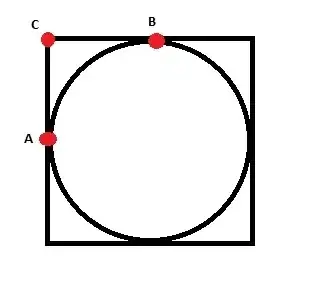What is the definition of length of a curve?
Don't have one?
I suggest we can postulate that length to be a "limit" of a decreasing monotonic sequence. Specifically for a circle, the length of a circle will be a lower bound to a sequence of perimeters of circumscribing regular polygons to the circle where the Nth term in the sequence is the perimeter of the N-sided regular circumscribing polygon for that circle.
The motivation for this definition of length of a curve is that it has to be a useful definition akin to the real world meaning of length of a curve, which is a value derived within measurement error by taking a flexible inelastic string to hug the contour of the convex curve. For a circle, this measured result is indistinguishable (within measurement error) from measuring the perimeter of a sufficiently many sided regular polygon circumscribed about the circle.
With this definition of circumference in play, we actually don't need to worry about dealing with infinite sequences to discover the limit value. We only need to show PI < 4.
If we find a regular polygon of perimeter < 4 (any regular polygon) and which circumscribes the circle, then we are done because this polygon is in the monotonic sequence and the length of the circle would be less than that perimeter by definition.
A winning polygon is the regular octagon formed by lobbing off the 4 corners of the square. [Simple geometry can calculate where to make the cuts. We can use angles or just Cartesian style coordinates depending on what the parameters of the problem are.]
We could prove the sequence is monotonic fairly easily but it is assumed. [We can calculate easily the perimeter of every such polygon. Note though that doubling the number of sides by lobbing off all vertices in a given polygon necessarily leads to a smaller perimeter by applying the triangle inequality to each such lobbing off.]
Yes, the original square is in that sequence as well, but to solve the specific question asked we need a polygon with N>4 as that implies PerimeterN < 4.
